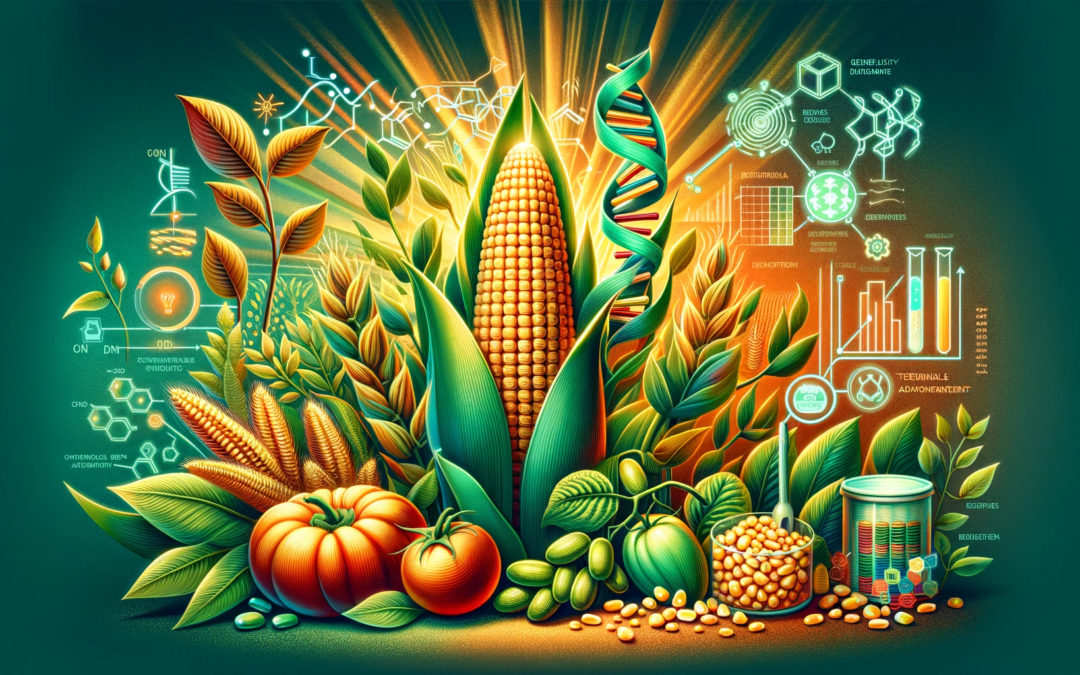The introduction of modified DNA and RNA into the food supply is not just a scientific achievement but a step towards addressing some of the most pressing global challenges. From bolstering environmental sustainability to enhancing food security and improving health, the benefits of these biotechnological advancements are multifaceted.
Potential Benefits of Modified Foods:
Environmental Sustainability:
Reduced Pesticide Use: Genetically modified crops resistant to pests and diseases significantly lower the need for chemical pesticides, reducing the environmental impact of agriculture.
Better Land Use and Reduced Deforestation: High-yield GM crops can produce more food per acre, which can help in reducing the pressure to clear additional land for agriculture, thus aiding in forest conservation.
Climate Change Resilience: Modifications like drought resistance and salt tolerance equip plants to better withstand harsh climatic conditions, making agriculture more resilient to climate change.
Enhanced Food Security:
Increased Crop Yields: Genetic modifications can lead to higher crop productivity, which is crucial in feeding a growing global population.
Improved Crop Resilience: GM crops with enhanced resistance to environmental stresses ensure more stable food supplies, crucial in regions prone to droughts, floods, or pest infestations.
Nutritional Security: Biofortification – the process of increasing nutritional value, such as vitamin and mineral content in crops – addresses micronutrient deficiencies in populations reliant on staple crops.
Health Advantages:
Reduced Allergenicity and Toxins: Genetic engineering can potentially reduce or eliminate allergens and natural toxins present in certain foods, making them safer for consumption.
Medicinal Benefits: The development of ‘edible vaccines’ incorporated into food plants is a promising field, which could make the delivery of vaccines simpler and more accessible.
Recent Advancements in Genetic Modification Technologies:
CRISPR-Cas9 and Beyond:
Precision Editing: The CRISPR-Cas9 system has revolutionized genetic engineering by allowing precise modifications without the introduction of foreign DNA. This tool has immense potential in developing crops with desired traits more efficiently.
Next-Generation Gene Editing: Newer technologies, like CRISPR-Cas13, which targets RNA, offer even more precise editing capabilities, potentially allowing temporary genetic modifications without altering the plant’s DNA.
Synthetic Biology and Artificial Genomes:
Synthetic Biology: This field combines biology and engineering, enabling the creation of entirely new biological systems and functions. In agriculture, this could mean designing plants with completely novel traits, such as enhanced photosynthesis efficiency.
Artificial Genomes: The synthesis of artificial genomes opens possibilities for creating plants and animals with optimized genetic codes, potentially revolutionizing food production.
Integration with Data Science and AI:
Predictive Analytics: The integration of big data and AI with genetic engineering accelerates the identification of beneficial genetic modifications by predicting how changes in DNA or RNA might affect a plant’s traits.
Automation and High-Throughput Technologies: Automated laboratories and high-throughput technologies enable the rapid testing and development of numerous genetic modifications, significantly speeding up the process of crop improvement.
Conclusion:
The introduction of modified DNA and RNA in the food supply, supported by cutting-edge technologies like CRISPR and synthetic biology, holds immense promise for addressing environmental, nutritional, and health challenges. These advancements herald a new era in food production, one characterized by sustainability, resilience, and improved health outcomes. However, as with any technological advancement, these innovations must be accompanied by careful consideration of ethical, environmental, and social implications. Embracing these technologies responsibly could lead to a future where food is not only abundant but also nutritious, sustainable, and accessible to all.










